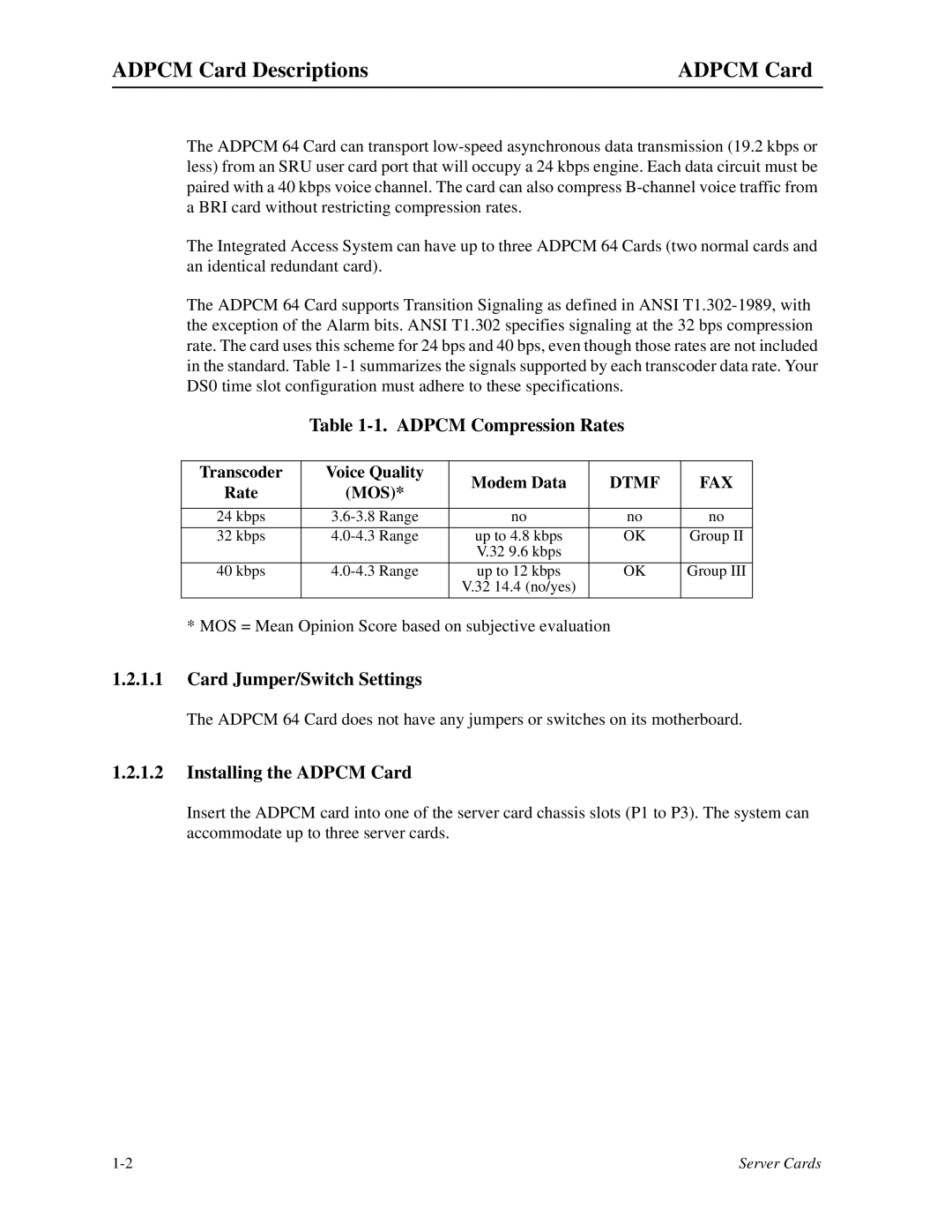ADPCM Card Descriptions | ADPCM Card |
The ADPCM 64 Card can transport
The Integrated Access System can have up to three ADPCM 64 Cards (two normal cards and an identical redundant card).
The ADPCM 64 Card supports Transition Signaling as defined in ANSI
Table 1-1. ADPCM Compression Rates
Transcoder | Voice Quality | Modem Data | DTMF | FAX | |
Rate | (MOS)* | ||||
|
|
| |||
|
|
|
|
| |
24 kbps | no | no | no | ||
32 kbps | up to 4.8 kbps | OK | Group II | ||
|
| V.32 9.6 kbps |
|
| |
|
|
|
|
| |
40 kbps | up to 12 kbps | OK | Group III | ||
|
| V.32 14.4 (no/yes) |
|
| |
|
|
|
|
|
*MOS = Mean Opinion Score based on subjective evaluation
1.2.1.1Card Jumper/Switch Settings
The ADPCM 64 Card does not have any jumpers or switches on its motherboard.
1.2.1.2Installing the ADPCM Card
Insert the ADPCM card into one of the server card chassis slots (P1 to P3). The system can accommodate up to three server cards.
Server Cards |
